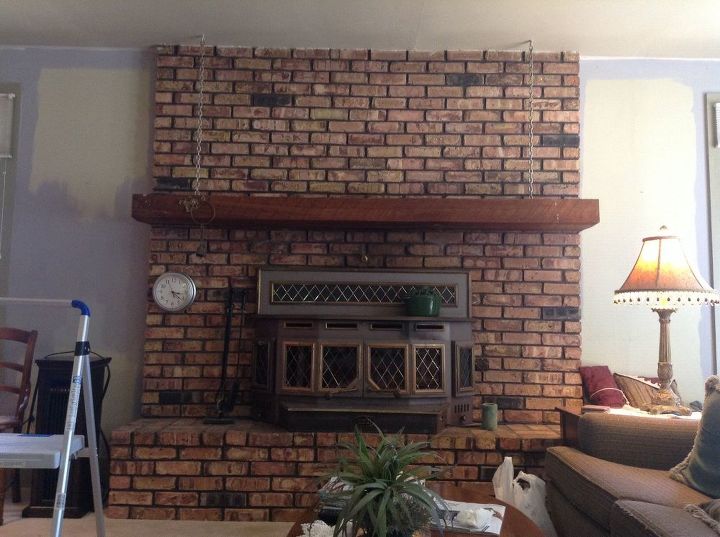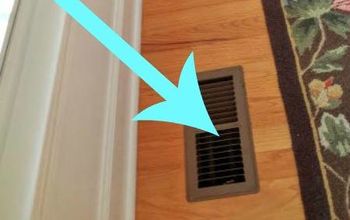What color for bedroom with low light?
Related Discussions
Should I paint or stain my oak kitchen cabinets?
I was wondering if you could help me with something -- I have an entirely oak kitchen. I know it's the rage now to paint or gel stain cabinets. I've been considering ... See more
How to paint a metal front door?
How do I paint my front door? It's metal.
How to paint grout?
How do I paint grout to change the color? The grout is in great shape, but the color - meh.
How to whitewash a brick fireplace?
What is the best method to whitewash bricks surrounding a fireplace?
I have wedgewood blue carpet in my bedroom. What is a good wall color
Bedroom carpet is rose. Help!
I cannot change the carpet at the moment, so i'm looking for wall color ideas and ways to not draw attention to the carpet.



how dark do you need to get a good nights sleep? Do you read watch tv....white will reflect the most light, but can be stark and can contrast to much with what is in the room. I personally reserve it for the bathrooms so I can spot mold mildew quicker. The next color would be a hint of golden yellow. Parchment type color. It also depends on what type of light bulbs you use....I like the daylight version of light bulbs, and my electrician told me to buy according to Lumans not wattage.
A soft shade of any color would be lovely. Gray, pink, blue, aqua, beige, or green are typical choices. Use a Gloss or semi glass to add light; use flat or darker shades for a muted room. Add a floor lamp or another lamp in a different position. Best wishes 😇
https://www.thespruce.com/tricks-for-brightening-a-dark-bedroom-350617
Five Tricks for Brightening A Dark Room (Here's how to decorate to add some light)
When it comes time to sleep, the darker your bedroom, the better. Light disrupts the brain’s production of melatonin, the hormone responsible for regulating the sleep cycle. But what if your bedroom is dark even during the daytime? It’s a common problem, but one often difficult to solve structurally because the typical causes – few windows, windows facing north, windows shaded by outside trees or structures – are not easily fixed without major remodeling. But don’t despair: you aren’t doomed to live in a bedroom that resembles a cave, nor do you have to break your budget and hire a contractor. There are decorating tricks that can bring light into even the gloomiest bedroom.
Bring in Extra Light
If your bedroom isn’t receiving enough natural light, then you are going to have to provide light yourself. But don’t set one lamp on your nightstand and call it done. Having just one light source creates a lot of shadow, giving your bedroom a creepy appearance and leaving the space outside the lamp’s circle of light just as dark as ever. Instead, illuminate your room with at least two, and preferably three, sources of light. You’ll always need a lamp on the nightstand or mounted to the wall near your bed, and if you share your bed, you’ll want a lamp on each side. Add to that a ceiling fixture if possible – go with a ceiling fan and get twice the benefit: a cooling breeze for hot summer nights and a brighter bedroom – and a second lamp positioned across the room, preferably on a diagonal, from your bedside light. Make the second lamp a floor lamp for extra interest.
Choose Your Wall Color Wisely
It seems counter-intuitive, but if your bedroom is dark, white walls are not the best solution. While light colors can help a small room appear bigger, they aren’t so great at making a dark room feel brighter. White and other light colors look bright and cheerful when reflecting light, but in a room without sufficient illumination, there isn’t enough light to reflect. This causes the light walls to take on a gray, shadowed hue, leaving the color dim and uninteresting. Instead, choose a richly saturated, mid-tone paint color for your walls. You can even go a bit bright if you desire. In a dim room, the bright color will lose intensity, and the mid-tone color will look a little darker. Deeper colors don’t rely on reflected light to look their best the way lighter tones do, and absorb shadows, so your strong walls will add color and warmth to the bedroom. Cool, moody, deep hues of green, blue, gray, or even purple are best for creating the relaxing atmosphere you want in a bedroom.
Mirrors Do Double Duty
A large mirror in the bedroom is a must regardless of light levels – you want to be able to check your outfit from head to toe before heading out for the day. In a bedroom with little light, however, a mirror also works to reflect whatever light is there, and also adds some shine to the space, dispelling some of the gloom. If possible, hang your mirror across from the window that lets in the most natural light to further bounce light around the space.
Keep Your Window Coverings Sheer
A dim bedroom isn’t the place for heavy draperies, or window coverings that block out what little natural light might otherwise reach the room. Instead, use sheer draperies over a blind you can lower for privacy at night, or use blinds on their own for a casual style. Stick with light-colored window coverings to add some contrast against the strong walls.
Bedding and Accessories Should Add Contrast
In a dark room, furniture and accessories can disappear into the gloom if you aren’t careful. If you paint your walls a saturated mid-tone or bright color, add contrast with furniture in a medium finish, and complete the brightening effect with bedding and accessories in white or another light color. This makes the most of the room’s limited light, and gives enough contrast to keep things interesting. A room that receives little natural light doesn’t have to be a bad thing – it stays cooler in the summer, and doesn’t wake you up with glaring sun on those happy weekend mornings when you want to sleep in late.
But lack of light can make a space gloomy. If remodeling isn’t an option, try the tricks here instead to increase the brightness of your bedroom.
Try a pastel color, cantelope, keylime green, sky blue, any shade that is light, and give it two coats. Good Luck!
I love mint green for bedrooms ( thats what Ive got too)